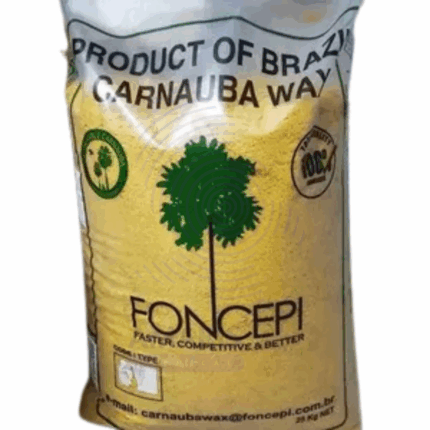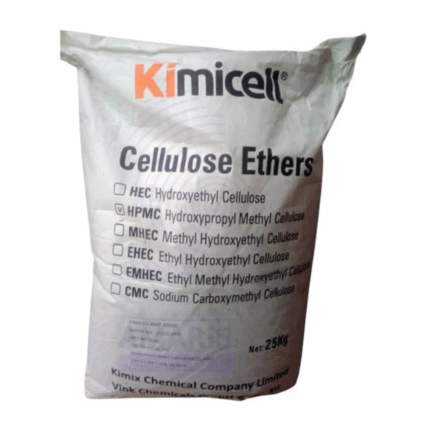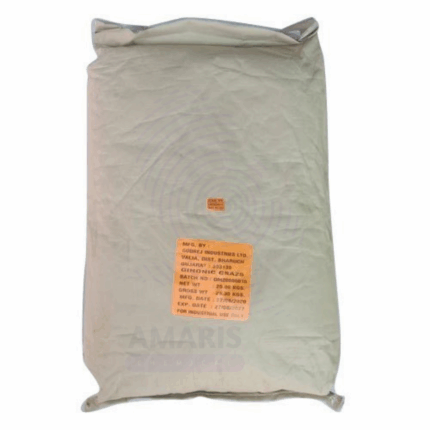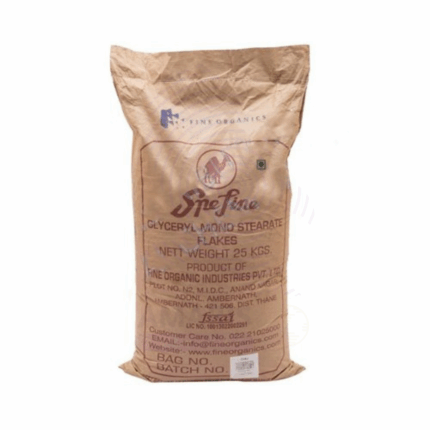“Carnauba Wax” has been added to your cart. View cart
Fish Collagen
Whatsapp Order
Fish Collagen is a natural protein derived from the skin, scales, and bones of various fish species through enzymatic hydrolysis or acid extraction. It is predominantly Type I collagen, known for its excellent bioavailability and biocompatibility. Fish Collagen typically appears as a fine white to off-white powder with low odor and high solubility in water and acidic solutions. It is widely prized in cosmetics, nutraceuticals, pharmaceuticals, and food industries due to its superior absorption compared to mammalian collagen, making it highly effective in skin, joint, and bone health applications. Fish Collagen supports the body’s extracellular matrix, promoting skin elasticity, hydration, and tissue repair.
Description
Table of Contents
Toggle
Fish Collagen
Primary Uses
- Cosmetics and Personal Care
- Key ingredient in anti-aging skincare products, improving skin hydration, elasticity, and reducing wrinkles and fine lines.
- Used in facial creams, serums, masks, and lotions to promote collagen synthesis and skin regeneration.
- Enhances wound healing and skin barrier function due to its bioactive peptides.
- Incorporated into hair and nail care formulations for strengthening and nourishment.
- Functions as a natural moisturizing agent improving skin texture and smoothness.
- Nutraceuticals and Dietary Supplements
- Widely used in oral collagen supplements aimed at improving joint health, reducing osteoarthritis symptoms, and promoting cartilage regeneration.
- Supports bone density and connective tissue strength, especially beneficial for aging populations.
- Promotes muscle mass retention and recovery in athletes and active individuals.
- Formulated in powders, capsules, drinks, and gummies for improved skin, hair, nails, and overall wellness.
- Often combined with vitamins C and hyaluronic acid to boost collagen synthesis and antioxidant protection.
- Pharmaceutical Industry
- Used in formulations targeting tissue repair and regeneration, including wound dressings and burn treatments.
- Applied in drug delivery systems as a biocompatible matrix for controlled release.
- Investigated for applications in orthopedic implants, cartilage repair, and tissue engineering scaffolds.
- Employed in biomedical hydrogels and scaffolds supporting cell growth and tissue regeneration.
- Food Industry
- Incorporated as a functional protein in fortified beverages, protein bars, and health foods.
- Enhances texture and nutritional value of gelatins, desserts, and confectionery.
- Used to improve mouthfeel and protein content in specialty nutrition products.
Secondary Uses
- Biomedical Research
- Utilized in cell culture as a substrate to study cell adhesion and growth.
- Used as a biomaterial for experimental regenerative medicine and 3D bioprinting.
- Material Science and Packaging
- Investigated for biodegradable film formation as a sustainable packaging material.
- Explored for use in wound dressing films with enhanced healing properties.
- Veterinary Applications
- Supplemented in pet nutrition for joint and coat health.
- Used in wound healing and tissue repair products for animals.
PRODUCT KEY FEATURES
- Basic Identification Attributes
- Chemical Name: Hydrolyzed fish collagen peptides (primarily Type I collagen)
- Common/Trade Name: Fish Collagen
- CAS Number: Not specific; varies by peptide composition
- HS Code: 3504.00 (Peptones and their derivatives) or 2106.90 (Food preparations)
- Molecular Formula: Variable depending on peptide chain length
- Synonyms: Marine collagen, fish gelatin, fish-derived collagen peptides, hydrolyzed fish collagen
- Physical & Chemical Properties
- Physical State: Fine powder
- Color & Odor: White to off-white; mild characteristic odor
- Solubility: Highly soluble in water and acidic solutions
- Molecular Weight: Typically 1,000 – 5,000 Dalton (depending on hydrolysis degree)
- pH: Usually acidic to neutral (pH 3-7) in solution
- Stability: Stable under dry, cool, dark storage; sensitive to moisture and high temperature
- Safety & Hazard Attributes
- Hazard Class (GHS): Generally recognized as safe (GRAS)
- Toxicity: Low toxicity; non-irritant and non-sensitizing at typical use levels
- Exposure Limits: No occupational exposure limits established
- Storage & Handling Attributes
- Storage Conditions: Store in a cool, dry, and dark environment in airtight containers to prevent moisture uptake and microbial growth
- Container Type: Food-grade plastic drums or vacuum-sealed bags
- Shelf Life: 12–24 months under recommended storage conditions
- Handling Precautions: Avoid moisture and prolonged exposure to heat
- Regulatory & Compliance Attributes
- Approved for use in food, cosmetics, and dietary supplements by FDA, EFSA, and other international bodies
- Complies with ISO and GMP standards for cosmetic and food-grade collagen
- Allergen information: Derived from fish; label accordingly for consumer awareness
- Environmental & Health Impact
- Biodegradability: Fully biodegradable and environmentally friendly
- Ecotoxicity: Low impact on aquatic and terrestrial ecosystems
- Bioaccumulation: Not applicable
- Carcinogenicity/Mutagenicity: No evidence of carcinogenic or mutagenic effects
SAFEY HANDLING PRECAUTIONS
- Safety Handling Precautions
- PPE Required: Gloves, dust mask if handling powder in bulk, safety goggles recommended
- Handling Guidelines: Use in well-ventilated areas; avoid inhalation of fine powder
- Storage Measures: Keep containers tightly closed, protect from moisture and heat
- Hygiene Practices: Wash hands thoroughly after handling; avoid ingestion and eye contact
- First Aid Measures
- Inhalation: Move to fresh air if irritation occurs; seek medical attention if symptoms persist
- Skin Contact: Wash with water and soap; seek medical advice if irritation develops
- Eye Contact: Rinse eyes with plenty of water for 15 minutes; consult physician if irritation persists
- Ingestion: Generally safe; rinse mouth and seek medical advice if large quantities ingested
- Firefighting Measures
- Fire Hazards: Combustible organic material; may produce toxic fumes on burning
- Extinguishing Media: Water spray, foam, dry chemical, or CO₂
- Special Precautions: Firefighters should use self-contained breathing apparatus and protective gear
- Decomposition Products: Carbon monoxide, carbon dioxide, nitrogen oxides, and other toxic fumes
Related products
Carnauba Wax Prime Yellow
Carnauba Wax Prime Yellow is a premium grade of natural vegetable wax derived from the leaves of the Copernicia prunifera palm tree, predominantly found in northeastern Brazil. This wax is characterized by its bright yellow color and superior purity, making it highly valued in high-end applications. It features a hard, brittle texture with a high melting point (82–86°C) and a mild, characteristic odor. Carnauba Wax Prime Yellow offers excellent gloss, durability, and water resistance. Its natural origin, combined with exceptional film-forming and emulsifying properties, makes it a preferred choice in cosmetics, food glazing, pharmaceuticals, automotive waxes, and industrial coatings where quality and performance are paramount.
Cellulose Ether
Cellulose ether refers to a group of chemically modified cellulose derivatives where hydroxyl groups on the cellulose backbone are substituted with ether groups such as methyl, hydroxyethyl, or carboxymethyl groups. These modifications improve solubility, viscosity, and film-forming properties while maintaining biodegradability and non-toxicity. Cellulose ethers are white to off-white powders or granules that dissolve in water to form viscous, stable solutions. They are widely used as thickeners, binders, stabilizers, and film formers in industries such as construction, pharmaceuticals, cosmetics, food, and paper.
Ceteareth 20 Ginonic CSA 20
Ceteareth 20 Ginonic CSA 20 is a nonionic surfactant and emulsifier derived from the ethoxylation of cetearyl alcohol, incorporating approximately 20 ethylene oxide units per molecule. It appears as a white to off-white waxy solid or viscous liquid, depending on temperature and formulation. This emulsifier is widely used in cosmetic, pharmaceutical, and industrial formulations for its excellent ability to stabilize oil-in-water emulsions, improve texture, and enhance the sensory properties of finished products. Its high hydrophilic-lipophilic balance (HLB) makes it especially effective in forming stable emulsions and solubilizing lipophilic ingredients in aqueous phases. Ceteareth 20 is valued for its mildness, broad compatibility, and multifunctional performance.
Ceto Stearyl Alcohol 1618TA ex VVF
Ceto Stearyl Alcohol 1618TA ex VVF is a premium-grade blend of cetyl (C16) and stearyl (C18) fatty alcohols, produced with high purity and consistent quality by VVF Ltd. This waxy solid is typically supplied as white to off-white flakes or pastilles with a mild fatty odor. Known for its excellent emulsifying, thickening, and emollient properties, it is widely utilized in cosmetics, pharmaceuticals, and industrial formulations. This specific grade from VVF is prized for its uniform particle size, high melting point, and superior performance in enhancing product texture, stability, and skin conditioning effects.
Cetomacrogol PEG1000 (Ginonic CSA 20)
Cetomacrogol PEG (Ginonic CSA) is a polyethylene glycol-based nonionic surfactant and emulsifier with an average molecular weight of approximately 1000 Da. It appears as a white to off-white waxy solid or flakes with a neutral odor. This high-quality grade is widely used in cosmetic, pharmaceutical, and personal care formulations due to its excellent emulsifying, solubilizing, and moisturizing properties. Cetomacrogol PEG1000 (Ginonic CSA 20) facilitates stable oil-in-water emulsions, improves product texture and skin feel, and enhances the bioavailability of active ingredients. Its hydrophilic nature and compatibility with a wide range of ingredients make it a versatile additive in creams, lotions, ointments, and topical gels.
Cetyl Palmitate
Cetyl Palmitate is a naturally derived ester formed by the reaction of cetyl alcohol and palmitic acid. It appears as a white to off-white waxy solid with a mild fatty odor. This compound is widely used in cosmetic, pharmaceutical, and industrial formulations for its emollient, thickening, and texture-enhancing properties. Cetyl Palmitate imparts a smooth, creamy feel to products and contributes to improved stability and consistency in creams, lotions, balms, and ointments. Its film-forming and skin-conditioning attributes make it a preferred ingredient in personal care products as well as in specialty industrial applications.
Emulsifier (Emulgator)
Emulsifier is a nonionic surfactant belonging to the family of Nonylphenol Ethoxylates (NPEs), specifically with an average of 9 ethylene oxide (EO) units. It is widely used as an effective emulsifying, wetting, dispersing, and solubilizing agent. NP-9 is typically a pale yellow to amber viscous liquid, soluble in water and various organic solvents. It is valued for its strong emulsifying ability to stabilize oil-in-water (O/W) and water-in-oil (W/O) emulsions, excellent detergency, and good compatibility with other surfactants and formulation ingredients. NP-9 is commonly employed in industrial, agricultural, cosmetic, pharmaceutical, and cleaning applications.
Glycerol Monostearate Flakes
Glycerol Monostearate Flakes is a white to off-white waxy flake form emulsifier composed of 40% monoglycerides of fatty acids, primarily stearic and palmitic acids, combined with other glycerides and esters. Derived mainly from vegetable oils, this food-grade emulsifier is widely utilized in food, cosmetic, pharmaceutical, and industrial sectors for its multifunctional properties. GMS 40% flakes serve as effective emulsifiers, stabilizers, anti-caking agents, and texture enhancers, with excellent compatibility and versatility in formulations requiring semi-solid or solid fats.


 Preservatives(food)
Preservatives(food) Flavor Enhancers
Flavor Enhancers Acidulants
Acidulants Sweeteners
Sweeteners Antioxidants
Antioxidants Colorants(food)
Colorants(food) Nutraceutical Ingredients (food)
Nutraceutical Ingredients (food) Nutrient Supplements
Nutrient Supplements Emulsifiers
Emulsifiers
 Collectors
Collectors Dust Suppressants
Dust Suppressants Explosives and Blasting Agents
Explosives and Blasting Agents Flocculants and Coagulants
Flocculants and Coagulants Frothers
Frothers Leaching Agents
Leaching Agents pH Modifiers
pH Modifiers Precious Metal Extraction Agents
Precious Metal Extraction Agents
 Antioxidants(plastic)
Antioxidants(plastic) Colorants (Pigments, Dyes)
Colorants (Pigments, Dyes) Fillers and Reinforcements
Fillers and Reinforcements Flame Retardants
Flame Retardants Monomers
Monomers Plasticizers
Plasticizers Polymerization Initiators
Polymerization Initiators Stabilizers (UV, Heat)
Stabilizers (UV, Heat)
 Antifoaming Agents
Antifoaming Agents Chelating Agents
Chelating Agents Coagulants and Flocculants
Coagulants and Flocculants Corrosion Inhibitors
Corrosion Inhibitors Disinfectants and Biocides
Disinfectants and Biocides Oxidizing Agents
Oxidizing Agents pH Adjusters
pH Adjusters Scale Inhibitors( water)
Scale Inhibitors( water)
 Antioxidants(cosmetic)
Antioxidants(cosmetic) Emollients
Emollients Fragrances and Essential Oils
Fragrances and Essential Oils Humectants
Humectants Preservatives
Preservatives Surfactants(cosmetic)
Surfactants(cosmetic) Thickeners
Thickeners UV Filters
UV Filters
 Fertilizers
Fertilizers Soil Conditioners
Soil Conditioners Plant Growth Regulators
Plant Growth Regulators Animal Feed Additives
Animal Feed Additives Biostimulants
Biostimulants Pesticides (Herbicides, Insecticides, Fungicides)
Pesticides (Herbicides, Insecticides, Fungicides)
 Active Pharmaceutical Ingredients (APIs)
Active Pharmaceutical Ingredients (APIs) Excipients
Excipients Solvents(pharmaceutical)
Solvents(pharmaceutical) Antibiotics
Antibiotics Antiseptics and Disinfectants
Antiseptics and Disinfectants Vaccine Adjuvants
Vaccine Adjuvants Nutraceutical Ingredients (pharmaceutical)
Nutraceutical Ingredients (pharmaceutical) Analgesics & Antipyretics
Analgesics & Antipyretics
 Analytical Reagents
Analytical Reagents Solvents(lab)
Solvents(lab) Chromatography Chemicals
Chromatography Chemicals Spectroscopy Reagents
Spectroscopy Reagents microbiology-and-cell-culture-reagents
microbiology-and-cell-culture-reagents Molecular Biology Reagents
Molecular Biology Reagents Biochemical Reagents
Biochemical Reagents Inorganic and Organic Standards
Inorganic and Organic Standards Laboratory Safety Chemicals
Laboratory Safety Chemicals Specialty Laboratory Chemicals(Special Laboratory Equipment)
Specialty Laboratory Chemicals(Special Laboratory Equipment)
 Demulsifiers
Demulsifiers Hydraulic Fracturing Fluids
Hydraulic Fracturing Fluids Scale Inhibitors(oil)
Scale Inhibitors(oil) Surfactants(oil)
Surfactants(oil) Drilling Fluids
Drilling Fluids
 Dyes and Pigments
Dyes and Pigments Bleaching Agents
Bleaching Agents Softening Agents
Softening Agents Finishing Agents
Finishing Agents Antistatic Agents
Antistatic Agents
 Admixtures
Admixtures Waterproofing Agents
Waterproofing Agents Sealants and Adhesives
Sealants and Adhesives Curing Compounds
Curing Compounds Concrete Repair Chemicals
Concrete Repair Chemicals Anti-Corrosion Coatings
Anti-Corrosion Coatings
 Surfactants(cleaning)
Surfactants(cleaning) Builders
Builders Enzymes
Enzymes Solvents (Cleaning)
Solvents (Cleaning) Fragrances
Fragrances
 Electronic Chemicals
Electronic Chemicals Catalysts
Catalysts Lubricants
Lubricants Photographic Chemicals
Photographic Chemicals Refrigerants
Refrigerants Automotive chemicals
Automotive chemicals Pyrotechnic Chemicals
Pyrotechnic Chemicals
 Biodegradable Surfactants
Biodegradable Surfactants Bio-based Solvents
Bio-based Solvents Renewable Polymers
Renewable Polymers Carbon Capture Chemicals
Carbon Capture Chemicals Wastewater Treatment Chemicals
Wastewater Treatment Chemicals
 Pigments
Pigments Solvents(paint)
Solvents(paint) Specialty Coatings
Specialty Coatings Binders/Resins
Binders/Resins Additives
Additives Driers
Driers Anti-Corrosion Agents
Anti-Corrosion Agents Functional Coatings
Functional Coatings Application-Specific Coatings
Application-Specific Coatings
 Fresh Herbs
Fresh Herbs Ground Spices
Ground Spices Whole Spices
Whole Spices Spice Blends
Spice Blends Dried Herbs
Dried Herbs
 Leavening Agents
Leavening Agents Dough Conditioners
Dough Conditioners Flour Treatments
Flour Treatments Fat Replacers
Fat Replacers Decoratives
Decoratives Preservatives(baking)
Preservatives(baking)
 Plasticizers & Softeners
Plasticizers & Softeners Reinforcing Agents
Reinforcing Agents Adhesion Promoters
Adhesion Promoters Vulcanizing Agents
Vulcanizing Agents Antidegradants
Antidegradants Blowing Agents
Blowing Agents Fillers & Extenders
Fillers & Extenders Accelerators & Retarders
Accelerators & Retarders
























